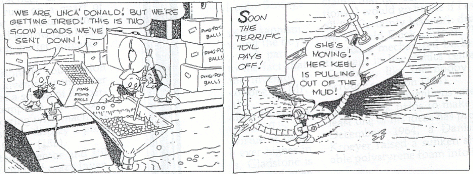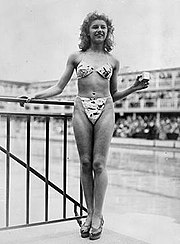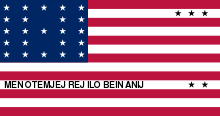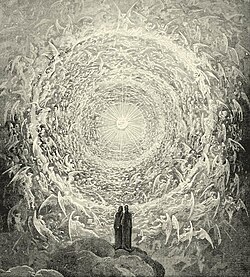1. The Industry of Normalcy takes its toll on us.
(Its pages are all freshly run.
Our pound of flesh in every line.)
Wednesday, June 17, 2009
Wednesday, June 10, 2009
1. We understood time before it happened. After that, it fell to mediocre experiences. The falafel experiences, the cottonwood dreams -- we both fell short from all expectations, all hopes. We dreamed of a union but like a forked branch we only unite before we separated. Now we dowse for water, for under-surface rivers, tears and blood, the veins thrombosis of our rod, shivering in the pale moonlight.
I am hungry for you.
Our love transpires in diamonds; the alchemy reversed. Do you recall the night before it fell?
All the dreams have been dreamt, but you go on dreaming new ones. I am the witch-doctor kicking up a storm, entering myself whether it's cold or it's warm. I kick up the dust so I can better see.
Can you see?
Although I reverse the pain it doesn't feel better -- the opposite of pain is still pain, under different whispered names. I bathe in all sorts of sounds -- they engulf. I bake whatever you bring home. I'm as open as a café. Come, make a latte with me. We drink our beans and then get lost around the waist line. Your eyes are pools for little fish, for little drops like mine -- in I go and out you come, we swim as lovers only can.
I am hungry for you.
Our love transpires in diamonds; the alchemy reversed. Do you recall the night before it fell?
All the dreams have been dreamt, but you go on dreaming new ones. I am the witch-doctor kicking up a storm, entering myself whether it's cold or it's warm. I kick up the dust so I can better see.
Can you see?
Although I reverse the pain it doesn't feel better -- the opposite of pain is still pain, under different whispered names. I bathe in all sorts of sounds -- they engulf. I bake whatever you bring home. I'm as open as a café. Come, make a latte with me. We drink our beans and then get lost around the waist line. Your eyes are pools for little fish, for little drops like mine -- in I go and out you come, we swim as lovers only can.
Tuesday, June 9, 2009
1. 'Interview' with Tom Waits (from which I first heard of bikini as per below). Most of it is lists but there are the occasional interesting parts. Excerpt:
Q: What’s hard for you?
A: Mostly I straddle reality and the imagination. My reality needs imagination like a bulb needs a socket. My imagination needs reality like a blind man needs a cane. Math is hard. Reading a map. Following orders. Carpentry. Electronics. Plumbing. Remembering things correctly. Straight lines. Sheet rock. Finding a safety pin. Patience with others. Ordering in Chinese. Stereo instructions in German.
~ ~ ~ ~ ~
2. Tom, at one point in the interview (see above), mentions the use of ping pong balls to raise a ship. See here for an analysis of this claim. It seems that it did originate with a Donald Duck cartoon.

~ ~ ~ ~ ~
3. Two-piece swimsuits without the usual skirt panel and other superfluous material started appearing in the US when the government ordered a 10% reduction in fabric used in woman's swimwear in 1943 as wartime rationing.
In April 2004, a bikini line with images of Buddha printed on it was withdrawn by Victoria's Secret, the manufacturer, in the face of protest by followers of Buddhism.
from http://en.wikipedia.org/wiki/History_of_the_bikini
Q: What’s hard for you?
A: Mostly I straddle reality and the imagination. My reality needs imagination like a bulb needs a socket. My imagination needs reality like a blind man needs a cane. Math is hard. Reading a map. Following orders. Carpentry. Electronics. Plumbing. Remembering things correctly. Straight lines. Sheet rock. Finding a safety pin. Patience with others. Ordering in Chinese. Stereo instructions in German.
~ ~ ~ ~ ~
2. Tom, at one point in the interview (see above), mentions the use of ping pong balls to raise a ship. See here for an analysis of this claim. It seems that it did originate with a Donald Duck cartoon.

~ ~ ~ ~ ~
3. Two-piece swimsuits without the usual skirt panel and other superfluous material started appearing in the US when the government ordered a 10% reduction in fabric used in woman's swimwear in 1943 as wartime rationing.
In April 2004, a bikini line with images of Buddha printed on it was withdrawn by Victoria's Secret, the manufacturer, in the face of protest by followers of Buddhism.
from http://en.wikipedia.org/wiki/History_of_the_bikini
Monday, June 8, 2009
Welcome to post 200.
1. The modern bikini was invented by French engineer Louis Réard in 1946. He named it after Bikini Atoll in the Pacific, the site of the Operation Crossroads nuclear weapon test on July 1, 1946. The reasoning was that the burst of excitement created by it would be like a nuclear device. Réard could not find a model to wear his design. He ended up hiring Micheline Bernardini, a nude dancer from the Casino de Paris.

Bikini Island is well-known for being the subject of nuclear bomb tests, and because the bikini swimsuit was named after the island in 1946. The two-piece swimsuit was introduced within days of the first nuclear test on the atoll, and the name of the island was in the news. Introduced just weeks after the one-piece "Atome" was widely advertised as the "smallest bathing suit in the world", it was said that the bikini "split the atome".

Click for larger image (quite amazing)
Between 1946 and 1958, twenty-three nuclear devices were detonated at Bikini Atoll. The March 1st, 1954 detonation codenamed Castle Bravo, was the first test of a practical hydrogen bomb. The largest nuclear explosion ever set off by the United States, it was much more powerful than predicted, and created widespread radioactive contamination.

Hired later by the Nuclear Claims Tribunal to research and report on the economic damage caused by the testing, Economist and Crisis Consultant Randall Bell writes in his book, Strategy 360, "Bravo had an explosive force equal to nearly 1,000 Hiroshima-type bombs. It vaporized the test island, parts of two other islands, and left a mile-wide crater in the lagoon floor. In total, nearly 70 acres of the Bikini Atoll were vaporized by the nuclear testing."
Randall Bell also notes, "Many of the landowners and local people accompanied me back to Rongelap an Rongerik, where much of the nuclear fallout came down. John, an elderly man, stood on his former home site in Rongelap and told me that he had gotten up early to make coffee and the sun had not yet come up. Suddenly, the sky lit up like it was day. He could see the large mushroom cloud rising off the horizon from Bikini and, soon after, he felt the blast of the shock wave. Later, as the entire village gathered, they watched the radiocative gray ash fall on them, their houses and their children. John did not express any anger, only deep sorrow that his one-year-old daughter died from leukemia soon after Bravo."
Among those contaminated were the 23 crewmembers of the Japanese fishing boat Lucky Dragon 5. The ensuing scandal in Japan was enormous, and ended up inspiring the 1954 film Godzilla, in which the 1954 U.S. nuclear test awakens and mutates the monster, who then attacks Japan before finally being vanquished by Japanese ingenuity.
~
Bikini comes from Marshallese "Pik" meaning "surface" and "Ni" meaning "coconut", "Bikini" is a derivation thereof.
~
The Flag of Bikini Atoll

The Flag of Bikini Atoll, a member of the Marshall Islands, is a flag closely resembling the flag of the United States and was adopted in 1987 to remind the people and the government of United States. The flag is symbolic of the islanders' belief that a great debt is still owed to the people of Bikini because in 1954 the United States government detonated a thermonuclear bomb on the island as part of the Bravo test.
The 23 white stars in the canton of the flag represent the 23 islands of Bikini Atoll. The three black stars in the upper right represent the three islands that were disfigured in March 1954 during 15-megaton Bravo test by the United States. The two black stars in the lower right corner represent where the Bikinians live now, Kili Island, 425 miles to the south of Bikini Atoll, and Ejit Island of Majuro Atoll. These two stars are symbolically far away from Bikini's stars on the flag as the islands are in real life (both in distance and quality of life). The Marshallese language words on the bottom of the flag, "MEN OTEMJEJ REJ ILO BEIN ANIJ," reportedly represent the words spoken in 1946 by the Bikinian leader, Juda, to U.S. Commodore Ben Wyatt when the American went to Bikini to ask the islanders to give up their islands for the 'good of all mankind' for nuclear weapons testing. It translates as "Everything is in the hands of God."
WOW.
BIKINIAN ANTHEM
Written by in 1946 Lore Kessibuki (1914-1994)
No longer can I stay; it's true.
No longer can I live in peace and harmony.
No longer can I rest on my sleeping mat and pillow
Because of my island and the life I once knew there.
The thought is overwhelming
Rendering me helpless and in great despair.
My spirit leaves, drifting around and far away
Where it becomes caught in a current of immense power -
And only then do I find tranquility
from http://en.wikipedia.org/wiki/Bikini;
http://en.wikipedia.org/wiki/Bikini_Island; http://en.wikipedia.org/wiki/Flag_of_Bikini_Atoll; http://www.bikiniatoll.com/anthem.html
1. The modern bikini was invented by French engineer Louis Réard in 1946. He named it after Bikini Atoll in the Pacific, the site of the Operation Crossroads nuclear weapon test on July 1, 1946. The reasoning was that the burst of excitement created by it would be like a nuclear device. Réard could not find a model to wear his design. He ended up hiring Micheline Bernardini, a nude dancer from the Casino de Paris.

Bikini Island is well-known for being the subject of nuclear bomb tests, and because the bikini swimsuit was named after the island in 1946. The two-piece swimsuit was introduced within days of the first nuclear test on the atoll, and the name of the island was in the news. Introduced just weeks after the one-piece "Atome" was widely advertised as the "smallest bathing suit in the world", it was said that the bikini "split the atome".

Click for larger image (quite amazing)
Between 1946 and 1958, twenty-three nuclear devices were detonated at Bikini Atoll. The March 1st, 1954 detonation codenamed Castle Bravo, was the first test of a practical hydrogen bomb. The largest nuclear explosion ever set off by the United States, it was much more powerful than predicted, and created widespread radioactive contamination.

Hired later by the Nuclear Claims Tribunal to research and report on the economic damage caused by the testing, Economist and Crisis Consultant Randall Bell writes in his book, Strategy 360, "Bravo had an explosive force equal to nearly 1,000 Hiroshima-type bombs. It vaporized the test island, parts of two other islands, and left a mile-wide crater in the lagoon floor. In total, nearly 70 acres of the Bikini Atoll were vaporized by the nuclear testing."
Randall Bell also notes, "Many of the landowners and local people accompanied me back to Rongelap an Rongerik, where much of the nuclear fallout came down. John, an elderly man, stood on his former home site in Rongelap and told me that he had gotten up early to make coffee and the sun had not yet come up. Suddenly, the sky lit up like it was day. He could see the large mushroom cloud rising off the horizon from Bikini and, soon after, he felt the blast of the shock wave. Later, as the entire village gathered, they watched the radiocative gray ash fall on them, their houses and their children. John did not express any anger, only deep sorrow that his one-year-old daughter died from leukemia soon after Bravo."
Among those contaminated were the 23 crewmembers of the Japanese fishing boat Lucky Dragon 5. The ensuing scandal in Japan was enormous, and ended up inspiring the 1954 film Godzilla, in which the 1954 U.S. nuclear test awakens and mutates the monster, who then attacks Japan before finally being vanquished by Japanese ingenuity.
~
Bikini comes from Marshallese "Pik" meaning "surface" and "Ni" meaning "coconut", "Bikini" is a derivation thereof.
~
The Flag of Bikini Atoll

The Flag of Bikini Atoll, a member of the Marshall Islands, is a flag closely resembling the flag of the United States and was adopted in 1987 to remind the people and the government of United States. The flag is symbolic of the islanders' belief that a great debt is still owed to the people of Bikini because in 1954 the United States government detonated a thermonuclear bomb on the island as part of the Bravo test.
The 23 white stars in the canton of the flag represent the 23 islands of Bikini Atoll. The three black stars in the upper right represent the three islands that were disfigured in March 1954 during 15-megaton Bravo test by the United States. The two black stars in the lower right corner represent where the Bikinians live now, Kili Island, 425 miles to the south of Bikini Atoll, and Ejit Island of Majuro Atoll. These two stars are symbolically far away from Bikini's stars on the flag as the islands are in real life (both in distance and quality of life). The Marshallese language words on the bottom of the flag, "MEN OTEMJEJ REJ ILO BEIN ANIJ," reportedly represent the words spoken in 1946 by the Bikinian leader, Juda, to U.S. Commodore Ben Wyatt when the American went to Bikini to ask the islanders to give up their islands for the 'good of all mankind' for nuclear weapons testing. It translates as "Everything is in the hands of God."
WOW.
BIKINIAN ANTHEM
Written by in 1946 Lore Kessibuki (1914-1994)
No longer can I stay; it's true.
No longer can I live in peace and harmony.
No longer can I rest on my sleeping mat and pillow
Because of my island and the life I once knew there.
The thought is overwhelming
Rendering me helpless and in great despair.
My spirit leaves, drifting around and far away
Where it becomes caught in a current of immense power -
And only then do I find tranquility
from http://en.wikipedia.org/wiki/Bikini;
http://en.wikipedia.org/wiki/Bikini_Island; http://en.wikipedia.org/wiki/Flag_of_Bikini_Atoll; http://www.bikiniatoll.com/anthem.html
Tuesday, June 2, 2009
1. "This'll be the first time I've ever seen it, but everything I've heard about it I like," said H. Lowe Crosby. "They've got discipline. They've got something you can count on from one year to the next. They don't have the government encouraging everybody to be some kind of original pissant nobody ever heard of before."
"Sir?"
"Christ, back in Chicago, we don't make bicycles any more. It's all human relations now. The eggheads sit around trying to figure out new ways for everybody to be happy. Nobody can get fired, no matter what; and if somebody does accidentally make a bicycle, the union accuses us of cruel and inhuman practices and the government confiscates the bicycle for back taxes and gives it to a blind man in Afghanistan."
- from Cat's Cradle, Kurt Vonnegut, Jr.
~
After turning down his original thesis, the University of Chicago, in 1971, awarded Vonnegut his Master's degree in anthropology for Cat's Cradle.
from http://en.wikipedia.org/wiki/Cat%27s_Cradle
~ ~ ~ ~ ~

~ ~ ~ ~ ~
3. Kurt Vonnegut talks on the source of his ideas.
"Sir?"
"Christ, back in Chicago, we don't make bicycles any more. It's all human relations now. The eggheads sit around trying to figure out new ways for everybody to be happy. Nobody can get fired, no matter what; and if somebody does accidentally make a bicycle, the union accuses us of cruel and inhuman practices and the government confiscates the bicycle for back taxes and gives it to a blind man in Afghanistan."
- from Cat's Cradle, Kurt Vonnegut, Jr.
~
After turning down his original thesis, the University of Chicago, in 1971, awarded Vonnegut his Master's degree in anthropology for Cat's Cradle.
from http://en.wikipedia.org/wiki/Cat%27s_Cradle
~ ~ ~ ~ ~

~ ~ ~ ~ ~
3. Kurt Vonnegut talks on the source of his ideas.
Monday, June 1, 2009
1. "Judged in the court of this movement, the single shapes of Spirit do not persist any more than determinate thoughts do, but they are as much positive and necessary moments, as they are negative and evanescent."
- from Phenomenology of Spirit (1807), Preface, #45

This is what happens to the reader of the meatgrinder that is the Phenomenology of Spirit.
- from Phenomenology of Spirit (1807), Preface, #45

This is what happens to the reader of the meatgrinder that is the Phenomenology of Spirit.
1. From today's paper (Times Colonist):
Bitterness a legitimate illness: psychiatrists
Bitterness should be classified an official brain illness, according to psychiatrists who say people who experience prolonged bitterness over a breakup or conflict at work are "ill" and need treatment.
They are proposing that "post traumatic embitterment disorder" be included in the Diagnostics and Statistical Manual of Mental Disorders, psychiatry's official catalogue of mental dysfunction.
Now in its fourth edition, DSM is undergoing its first major revision since 1994. DSM-V is due to be published in 2012, and other possible new contenders for inclusion include Internet addiction, apathy disorder, compulsive buying disorder, compulsive pathological overeating, "premenstrual dysphoric disorder" and "partner relational problem."
(I remember at one point some were trying to get anger into the manual.)
Bitterness a legitimate illness: psychiatrists
Bitterness should be classified an official brain illness, according to psychiatrists who say people who experience prolonged bitterness over a breakup or conflict at work are "ill" and need treatment.
They are proposing that "post traumatic embitterment disorder" be included in the Diagnostics and Statistical Manual of Mental Disorders, psychiatry's official catalogue of mental dysfunction.
Now in its fourth edition, DSM is undergoing its first major revision since 1994. DSM-V is due to be published in 2012, and other possible new contenders for inclusion include Internet addiction, apathy disorder, compulsive buying disorder, compulsive pathological overeating, "premenstrual dysphoric disorder" and "partner relational problem."
(I remember at one point some were trying to get anger into the manual.)
Subscribe to:
Comments (Atom)

